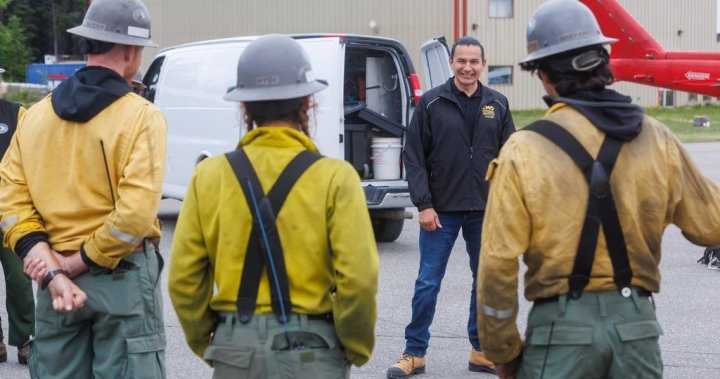The Manitoba government has officially lifted the province-wide state of emergency declared last month as wildfire conditions have significantly improved across the region. The announcement marks a turning point in what has been a challenging summer for residents and emergency personnel battling blazes that threatened communities and forced evacuations.
“The immediate threat has subsided,” confirmed Transportation and Infrastructure Minister Lisa Naylor during yesterday’s press conference. “Cooler temperatures and recent rainfall have helped firefighting crews gain the upper hand against the most threatening fires.” The state of emergency, initially declared on July 21, empowered provincial authorities to allocate resources and implement evacuation protocols in high-risk areas.
According to the Manitoba Wildfire Service, the province has experienced over 250 wildfires this season, burning approximately 650,000 hectares of land—an area larger than Prince Edward Island. The northeastern regions bore the brunt of the crisis, with communities like Cranberry Portage and Flin Flon facing particular danger as flames approached populated areas.
The lifting of emergency measures comes as weather patterns shift toward more favorable conditions for containment efforts. Environment Canada meteorologist Eleanor Davidson notes that “the seasonal transition toward autumn typically brings increased precipitation and lower temperatures, which naturally assist in fire suppression.”
For the hundreds of residents displaced during peak fire activity, the news brings cautious relief. “We’re gradually allowing people to return to their communities as safety assessments are completed,” explained Naylor. However, officials at the Manitoba Emergency Measures Organization stress that returning evacuees should remain vigilant, as isolated hotspots could still pose localized threats.
The economic impact of the wildfires extends beyond immediate property damage. The forestry sector, a significant contributor to Manitoba’s economy, faces long-term recovery challenges. Industry analysts estimate losses exceeding $75 million, with potential ripple effects throughout supply chains and local economies.
Despite the improved conditions, fire officials emphasize that restrictions on outdoor burning remain in effect across much of the province. “The landscape remains susceptible to new ignitions,” cautions Provincial Fire Commissioner David Schafer. “One careless campfire or improperly discarded cigarette could quickly escalate into another emergency situation.”
The provincial government has committed $12.5 million toward recovery efforts, focusing on infrastructure repair and community support services. This funding complements federal disaster assistance programs activated earlier this summer when the crisis reached its peak.
Climate scientists from the University of Manitoba point to this season’s wildfire intensity as consistent with global climate trends. “What we’re experiencing aligns with projections that indicate longer, more severe fire seasons will become increasingly common,” explains Dr. Helena Ramirez, professor of environmental science. “The data suggests this isn’t an anomaly but potentially the new normal for prairie provinces.”
Looking forward, provincial authorities are already evaluating response protocols and resource allocation strategies ahead of next year’s fire season. The lessons learned from this summer’s crisis will inform adjustments to emergency preparedness planning across Manitoba’s vulnerable regions.
As communities begin their recovery process, the question remains: how will Manitoba adapt its forestry management, community planning, and emergency response systems to address what appears to be an escalating climate threat in the years ahead?


















